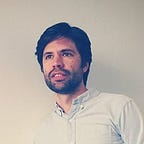Visibility
People that work with me will have heard me say this word a lot. It’s a bit of a mantra.
I’ve realised that it’s natural for programmers to work in a transparent way. I’ve worked this way by default from very early on in my career as a coder. When you work in a team of engineers things have to be visible all the time. The code needs to be visible, the output needs to be visible. You regularly commit code for peers to review and it’s natural to hack together in pairs or groups to solve complex problems together.
The effects of working this way are profound:
- You get used to constructive feedback and criticism. You don’t repeat mistakes and you avoid common pitfalls.
- In showing your work you’re exposing everyone to the (often) hidden process of discovery and they can see not just the final result but all the effort and thinking that went into getting to that result. Demonstrating to other members of the team how you solved a particular problem is fundamental to their learning.
- There’s a certain rigour that comes with having to make your work visible. You tend to spend more time formulating your decision making process and making things presentable.
We all have a part to play in communicating what we do and how we do it, within our specialisms and to the wider teams. We should encourage visibility, not just at key stages, but throughout the making process, embedded in the way people work.
Outside of our usual process (blended teams, daily project stand-ups, workshops, brainstorms and sprint planning) we have twice weekly tech and design catchups and an informal “demos” slot on a Friday when anyone can show something they’ve worked on or found interesting.
I’ll admit though that we need to do more to encourage everyone to get involved. We’re laser focused on what we make so the designers and engineers naturally get the attention but it’s important for everyone in an organisation. I’m also acutely aware that not everyone feels confident and comfortable working in this way.
And that’s the real challenge. Creating an environment where everyone feels they can talk about and demonstrate what they do. An environment that is encouraging and supportive. The more confident people feel, the more likely they are to engage in discussion and collaboration.
So perhaps start by showing someone, even someone who doesn’t do what you do, what you’re working on. If you can, stand up in front of the people you work with and demonstrate what you do. Explain your code. Present your deck. Talk about your social media campaign. If you manage a team, create opportunities for everyone to show their work within your organisation.
It helps break down the barriers. It encourages collaboration, open discussion, sometimes disagreement, but ultimately coming together to make something the best it can be.
While you’re here, we’re looking for a Senior Designer to join us at SOON_. We’re growing fast, we’ve got a great portfolio of established brands and startups and many more exciting opportunities in the pipeline.
Senior Designer is slightly misleading because it’s more than that. It’s a crucial role for us. We’d really like someone who is happy and able to be hands on as well as leading the team. Someone who can inspire, mentor and share knowledge to push boundaries at every stage. You might be designer ready to take that next step or perhaps you’ve had a little experience managing a small team and you’re ready to step up.
We’re very focused on how we make stuff but really believe you can make amazing work and enjoy the process. Take a look at the role and come and show us what you can do.
